WEEK 14 - THE LOCAL PATCH
I wrote in an earlier post that I don't usually chase birds and other subjects all over the state, or beyond. While I occasionally take a trip to photograph a specific subject, most of my sightings and pictures are made within 15 or 20 miles of my home. I have a number of areas close by, birders call them patches, that I check as frequently as I can. By visiting an area regularly, I'm able to get a better sense of what goes on there, the seasonal changes, patterns and behavior the inhabitants and the timing of the activity. This helps me know where and what to look for and anticipate things I want to get pictures of. Of all the factors that I've found to improve my photo opportunities over the years, I think building reservoir of knowledge from observation and experience is the most important.
Of course not everything in nature is entirely predictable. By repeatedly visiting the same spots, I occasionally find that one of my regular patches gets really active, and turns into a hotspot. When that happens, I try to concentrate on that one area to take advantage of all the activity. To use a sports analogy, it's like riding the hot hand.
Rocky Neck State Park is only a couple miles from my home, and is one of the patches I frequent, but it's usually not one of my favorite or most productive spots. At most times of the year, there are other areas nearby that I spend a lot more time at, but the exception is in early April. At this time of year, Rocky Neck is a hotspot of activity. Osprey return to the area and begin their nesting routine and a variety of ducks stage in the marsh before their migration north. The marsh is also teeming with gulls, egrets, herons, Glossy Ibis and Double-crested Cormorants. Every year at this time I visit the the park often to photographing them, and this year is no different. 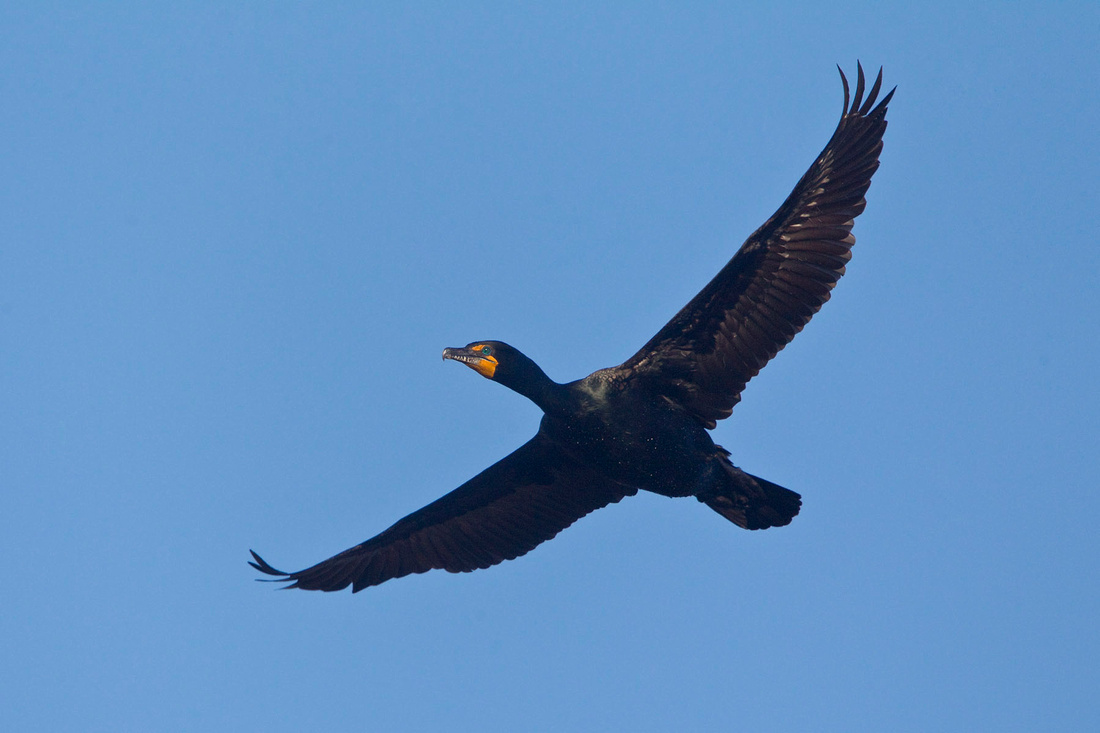
 The cormorants are one of my favorites, as they gather in the marsh to fish, and collect sticks for their sparse nests. Not the most agile birds in flight, it takes them some time to gain altitude, and they often fly out of the marsh at a very low height. I like to wait at the spots they fly out of and photograph them as they wing past, often carrying a single tiny twig for their nests on the rocky offshore islands. One day this past week, I heard a crashing sound in the trees and turned to see a cormorant that had struck a tree top, and tumbled all the way down through the branches, before hitting the ground. None the worse for its ordeal, it shook itself off and flew back out into the marsh.
The cormorants are one of my favorites, as they gather in the marsh to fish, and collect sticks for their sparse nests. Not the most agile birds in flight, it takes them some time to gain altitude, and they often fly out of the marsh at a very low height. I like to wait at the spots they fly out of and photograph them as they wing past, often carrying a single tiny twig for their nests on the rocky offshore islands. One day this past week, I heard a crashing sound in the trees and turned to see a cormorant that had struck a tree top, and tumbled all the way down through the branches, before hitting the ground. None the worse for its ordeal, it shook itself off and flew back out into the marsh.
Egrets abound in the salt marsh, gathering to hunt fish in the shallow tidal pools. Snowy Egrets, as part of their breeding rituals, emit rude, guttural squawks every time the fly from one puddle to the next, belying their graceful motions and elegantly plumed appearance. Great Egrets, less noisy than the than their smaller relatives, show off their own fine plumes and the lime green lores of their breeding plumage. The Snowies are still a bit behind developing their vivid red lores. 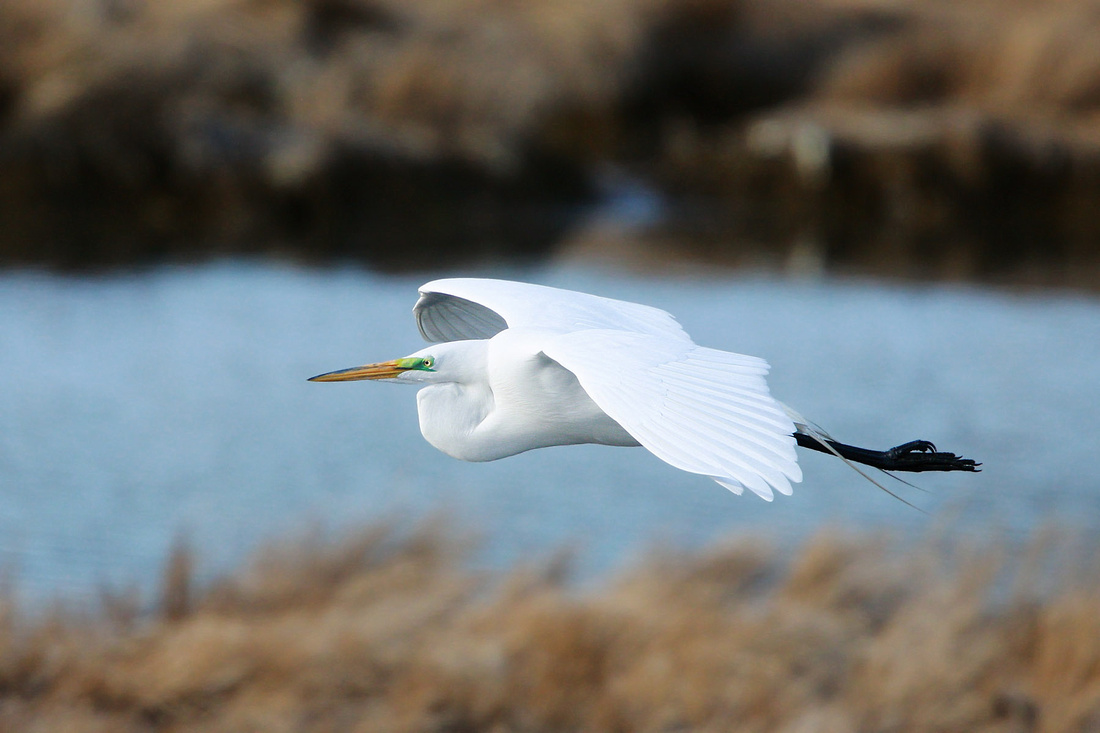


 The most exciting thing to photograph is the Osprey activity as they fish and set up their nests. Osprey time their arrival here with that of the river herring, particularly Alewives, which return from the ocean each spring, heading up into rivers, streams and eventually into ponds where they spawn. The Bride Brook, which runs through Rocky Neck has one the healthiest herring runs remaining in Connecticut, where they have suffered a decades-long decline. Every spring Osprey follow the thick schools of herring as they make their way up into the brook and surrounding salt marsh. This years there seemed to be more Osprey fishing in the marsh than I can remember. I was able to count 12 Osprey in the marsh at one time, including three birds jockeying for position over one small pool in search of the fish.
The most exciting thing to photograph is the Osprey activity as they fish and set up their nests. Osprey time their arrival here with that of the river herring, particularly Alewives, which return from the ocean each spring, heading up into rivers, streams and eventually into ponds where they spawn. The Bride Brook, which runs through Rocky Neck has one the healthiest herring runs remaining in Connecticut, where they have suffered a decades-long decline. Every spring Osprey follow the thick schools of herring as they make their way up into the brook and surrounding salt marsh. This years there seemed to be more Osprey fishing in the marsh than I can remember. I was able to count 12 Osprey in the marsh at one time, including three birds jockeying for position over one small pool in search of the fish.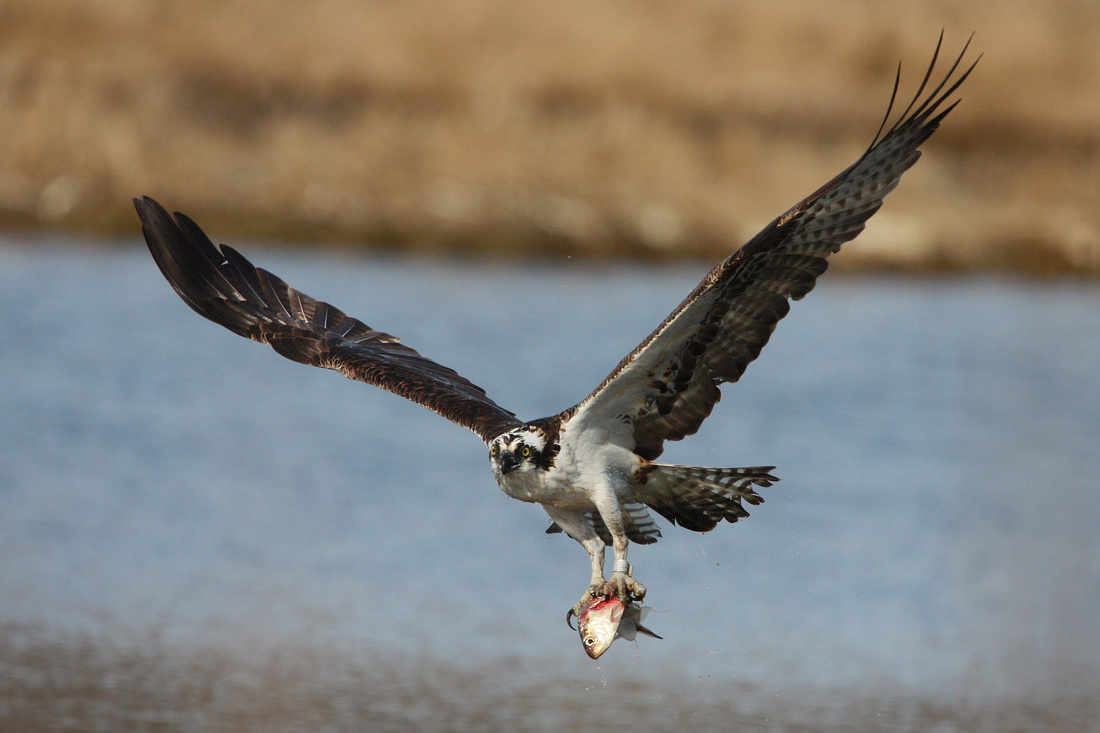

The reason for the increased number of Osprey might signal some good news for a change. I have been interested in the plight of river herring for a several years, since I worked on a story for the Hartford Courant about the Connecticut DEP (now DEEP) efforts to restore the diminishing runs. Earlier this week I stopped at one of the streams that was being restored to see how the fish were running and was surprised to find a big school them. As I was setting up to photograph them, a DEEP technician I first met while working on the Courant story stopped there to count the fish. He told me that last year the number of river herring returning increased, particularly in New London County and this year the early results were also promising, leading to some guarded optimism. The picture below shows the school of Alewives.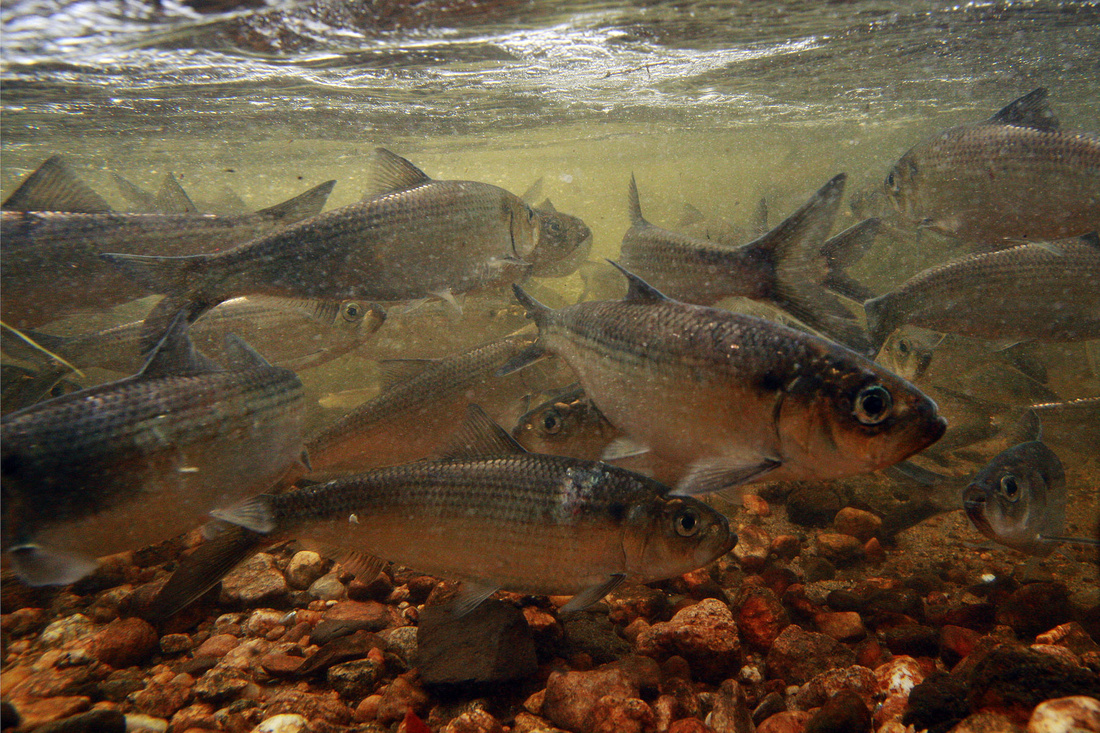

Since Rocky Neck was so hot, I went there every morning and evening that I could. All the pictures in this post except the one above were taken there this past week. I spent a lot of time trying to catch all the different stages of the Osprey's dive for fish, including the first stage when they tuck their wings and plummet towards the water, head first.
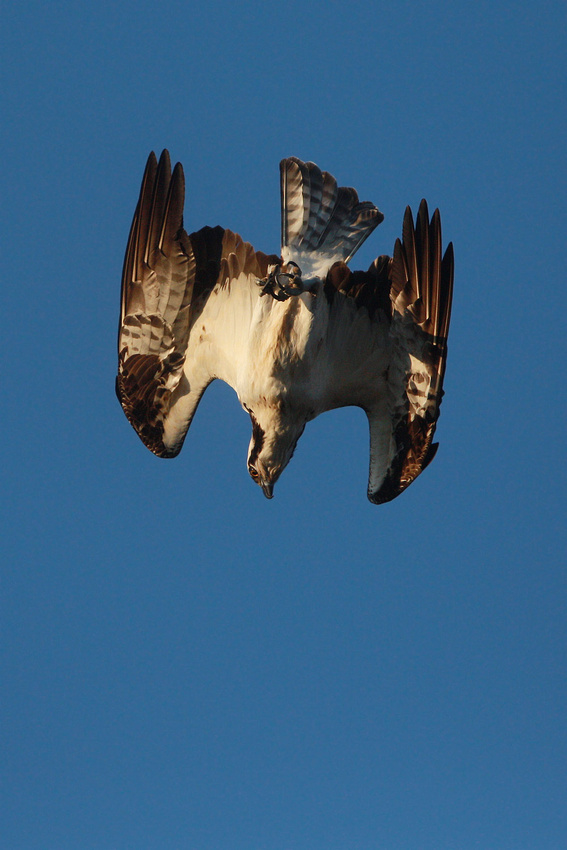

...... followed by the downward glide where they start to deploy their landing gear ......... 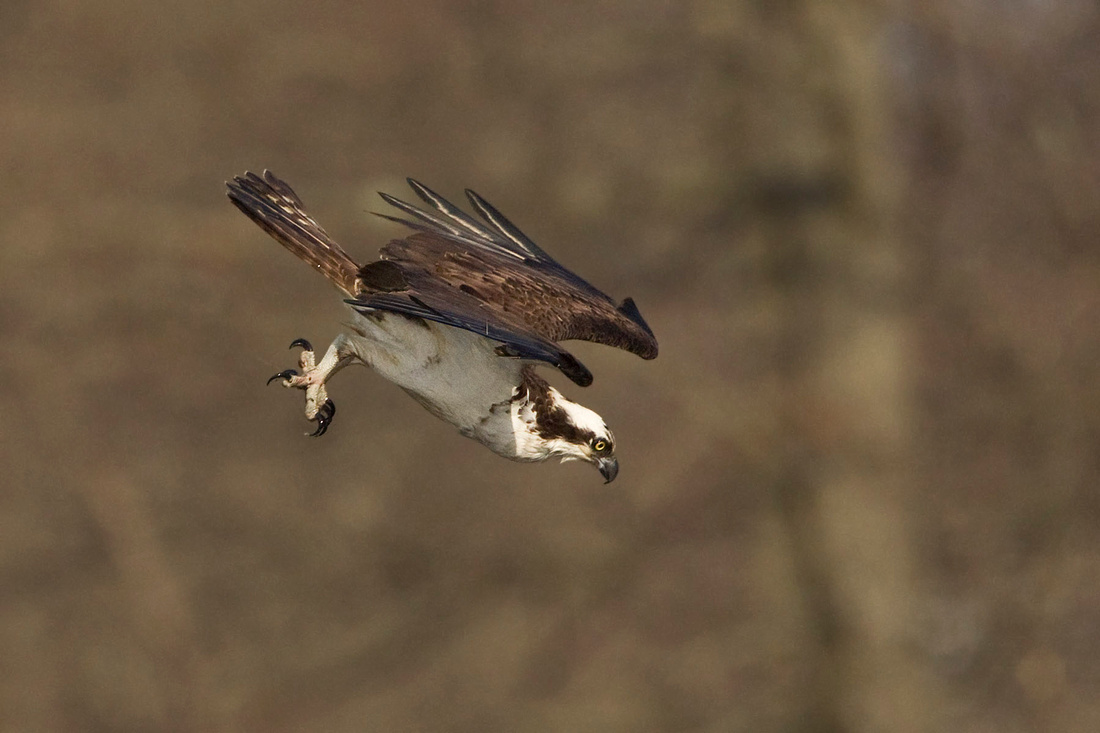

.... and then the hardest to capture, where they throw there feet forward just before hitting the water.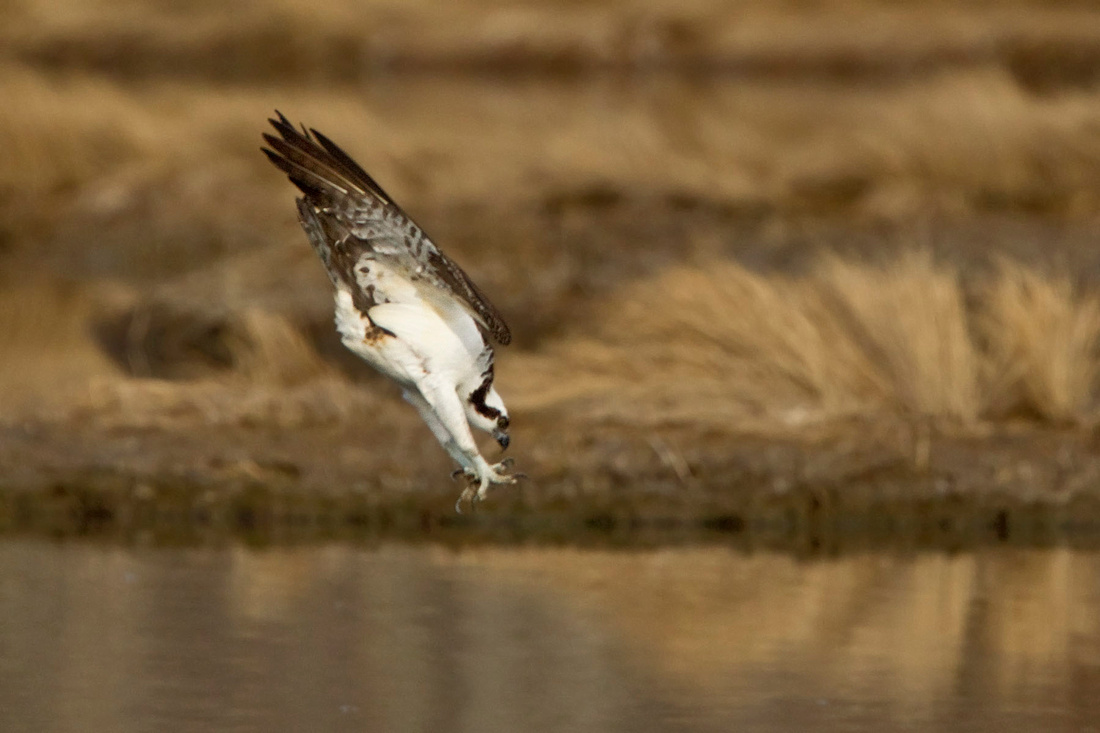

.... which I still need to work on because all my pictures are either soft (not in sharp focus) or completely out of the frame. And then the catches ...


and misses, which were split about 50/50.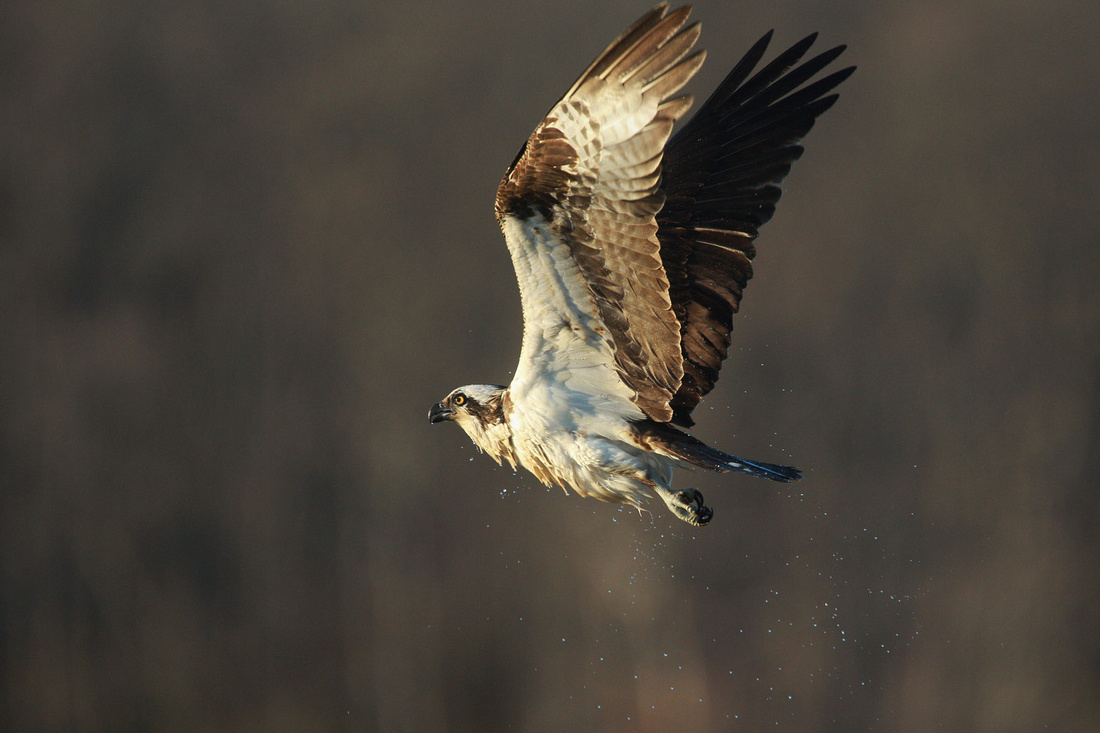

One Osprey hit the daily double, coming up with two fish in one try 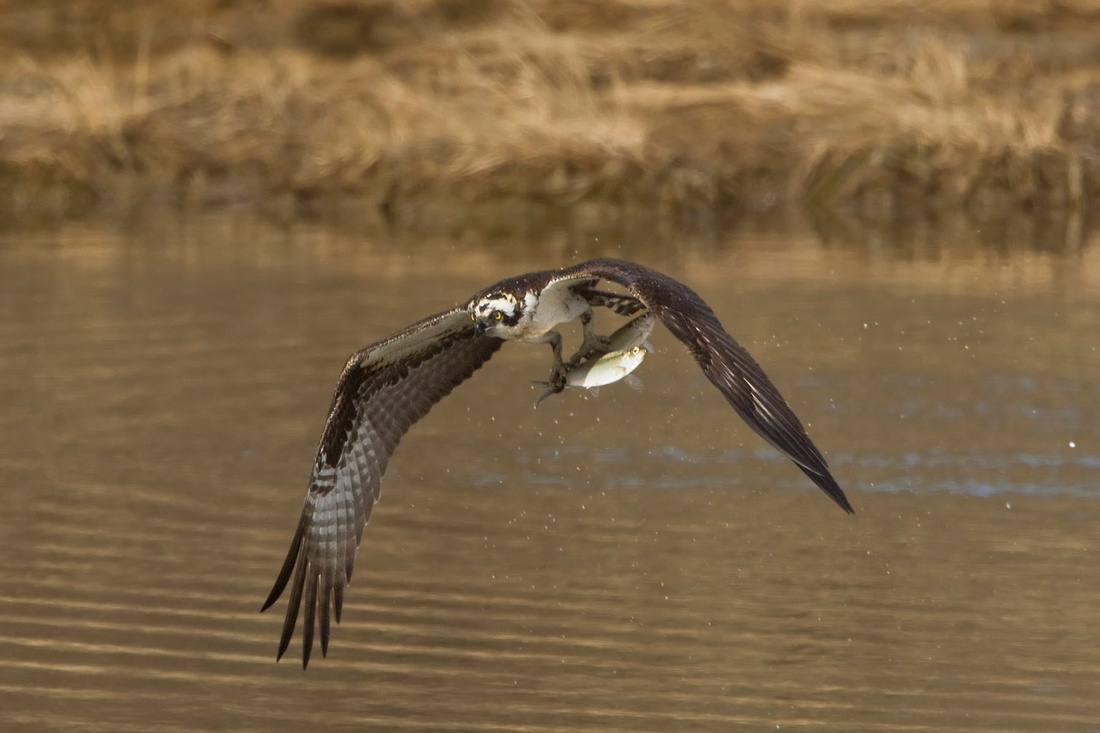

but then couldn't hold both of them, and dropped one back into the water.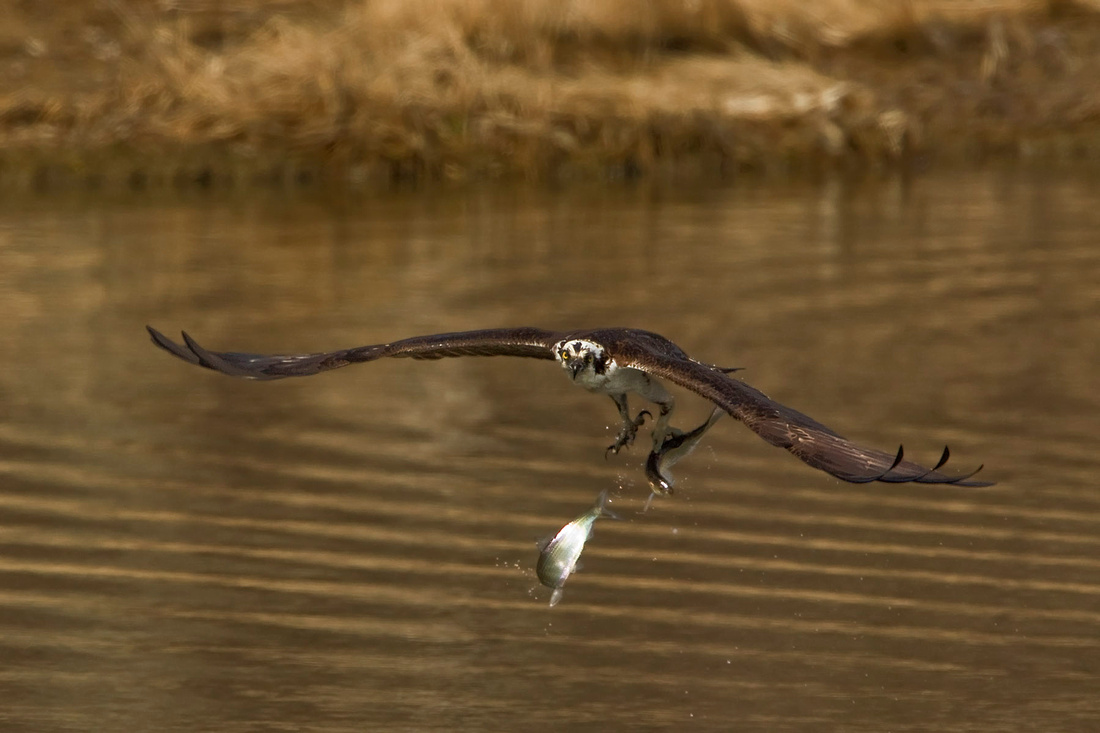

While I continued following the Osprey, now with only one fish, I didn't see what became of the dropped fish, but a few seconds later an aptly named Herring Gull flew by with a mouthful .....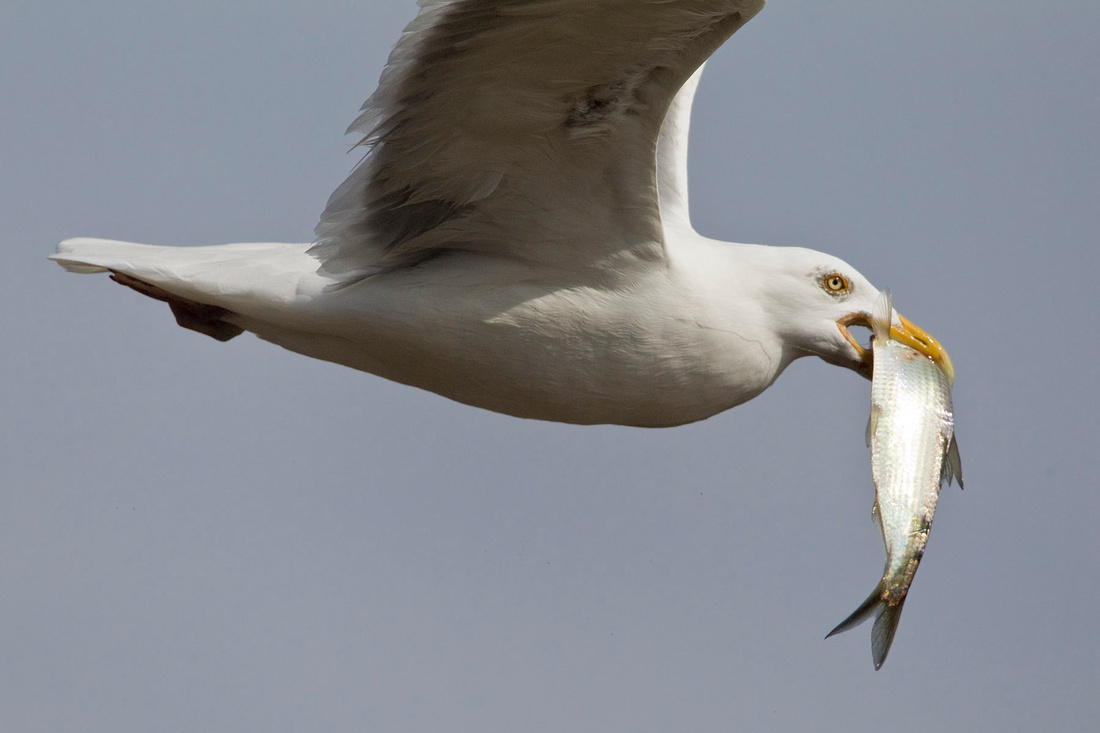

......... which it proceeded to gulp down in mid flight.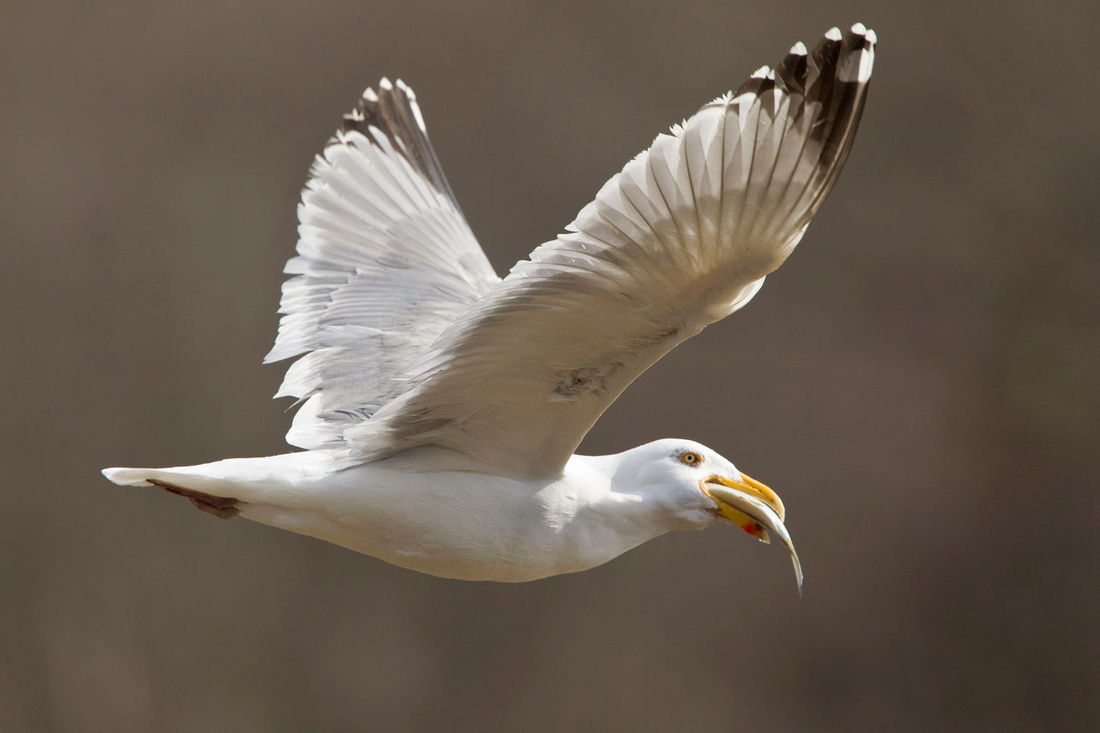

Adding to the excitement this year is the presence of two sub-adult Bald Eagles. Both appear to be four year old year birds, and at least one has been around every day I've visited the park recently. 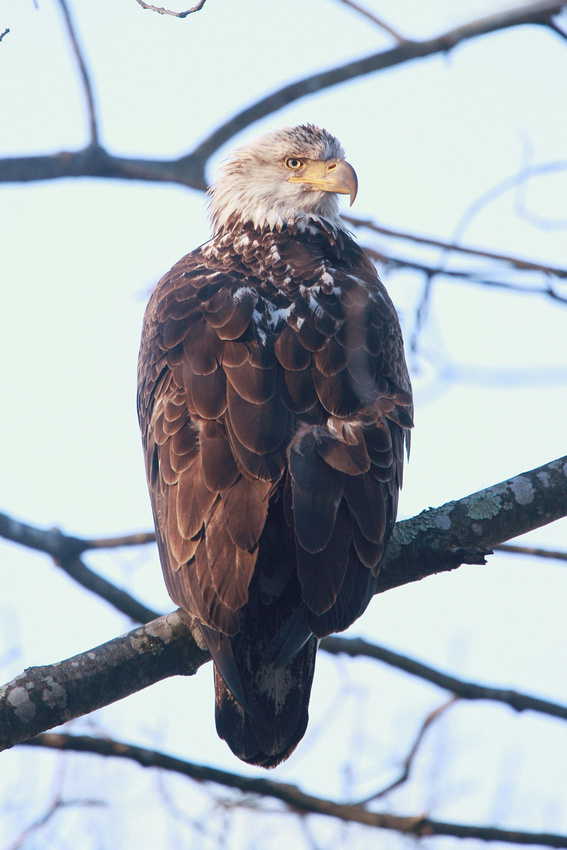

Occasionally one or both of them fly out over the salt marsh putting every bird around into the air.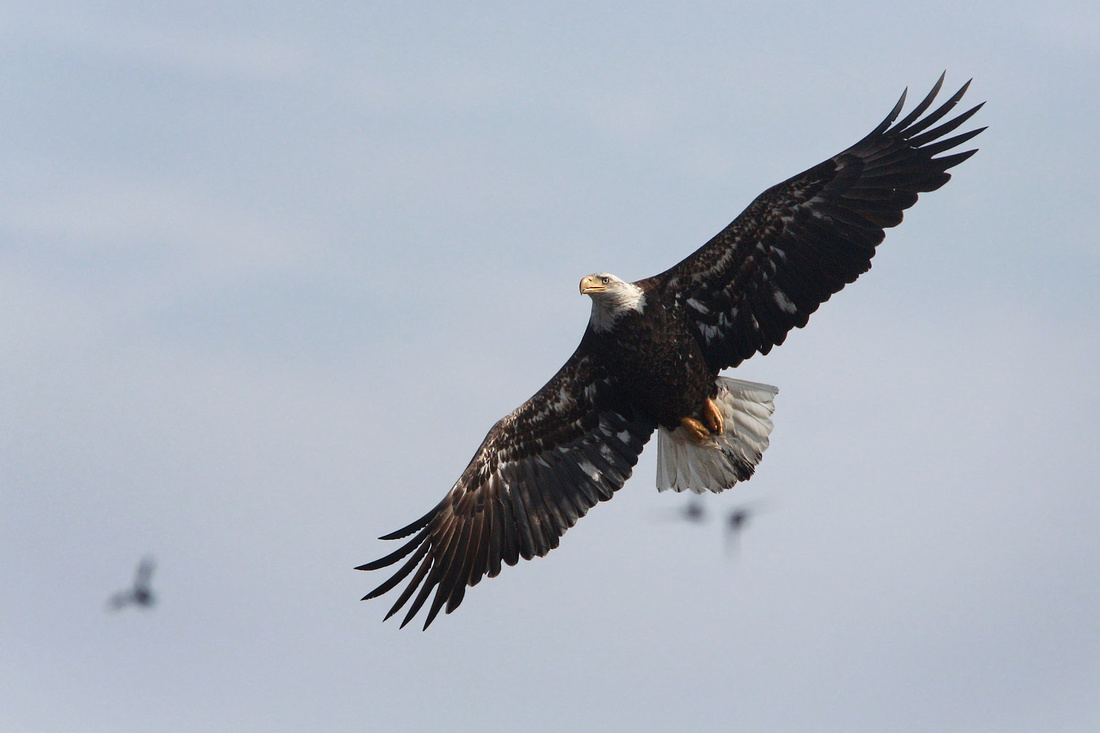

but, most of the time I see them, they are sitting in the trees on the west side of the marsh, waiting for an Osprey to catch a fish ........

then the eagles fly out from the trees and the chase is on.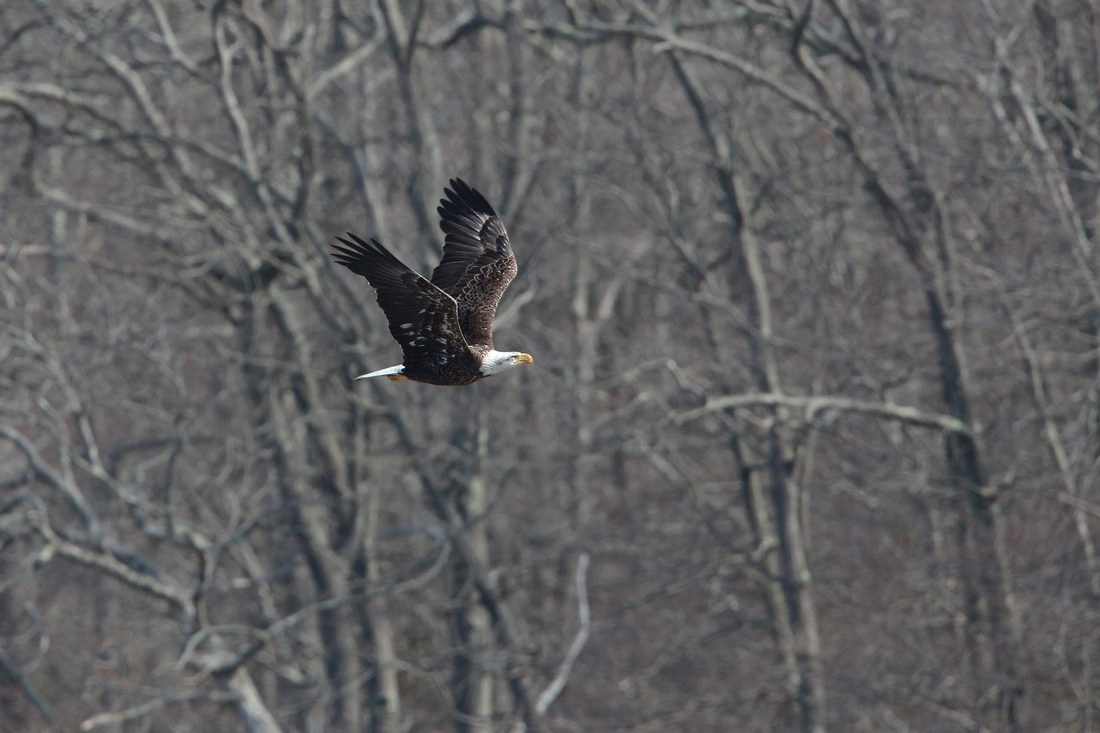

One eagle chased an Osprey returning to its nest with a clump of seaweed for nearly a minute (based on the time stamps from my pictures). The eagle was close enough to easily see the seaweed, but continued the chase until the Osprey released it and the eagle grabbed it in midair. The pursuer returned to its perch with the loot, and was joined by its cohort, but they seemed a bit puzzled by what to do with it.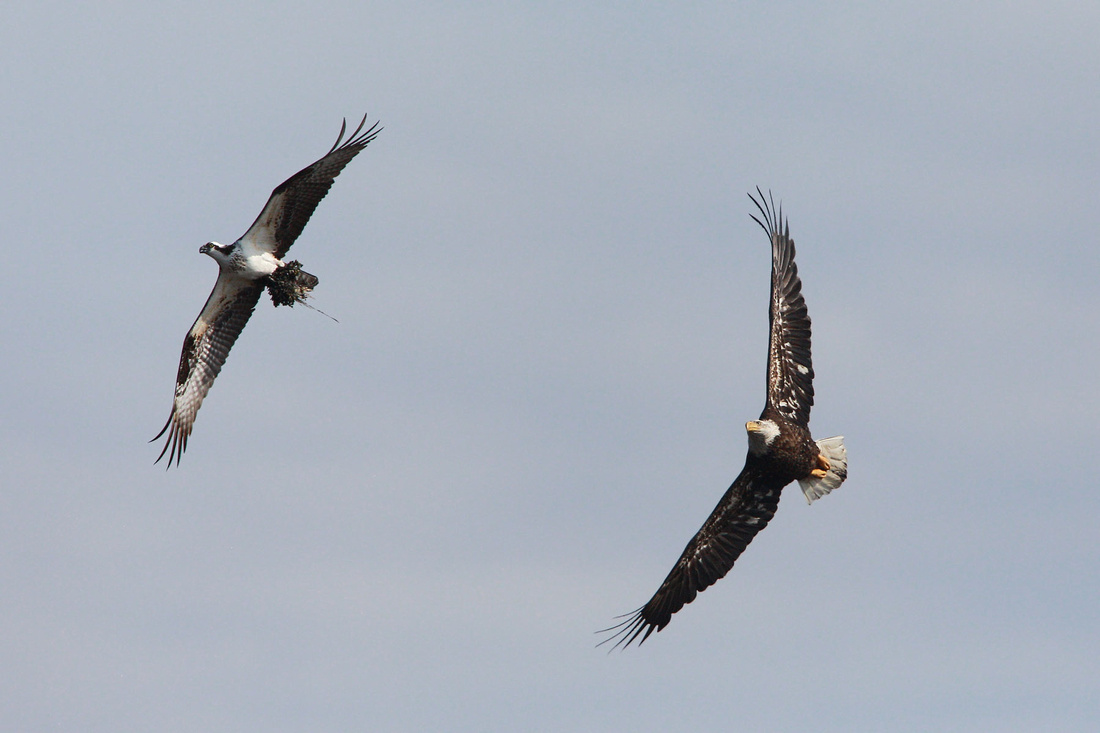

The high number of Osprey in the marsh following the herring run has had the resident nesting Osprey pair on edge. By the end of the week the resident male spent much of his time trying to drive off the interloping Osprey, fishing in close proximity to their nest. Some of the intruders flew over their nest clutching fish and chirping loudly in an attempt to lure the nesting female away, which drew more aggitated responses from the male. Add to that the presence of the Bald Eagles, making every bird in the marsh nervous, and the stage was set for high drama. With the resident Osprey continually chasing off other Osprey, the Bald Eagles chasing Osprey with fish, even the lowly Herring Gulls pursuing Osprey with fish on occasion, there was seldom a dull moment (a slight exaggeration) in the park the past week. Even a nervy Red-winged Blackbird got into the act, hounding a poor Osprey that strayed too close singing perch.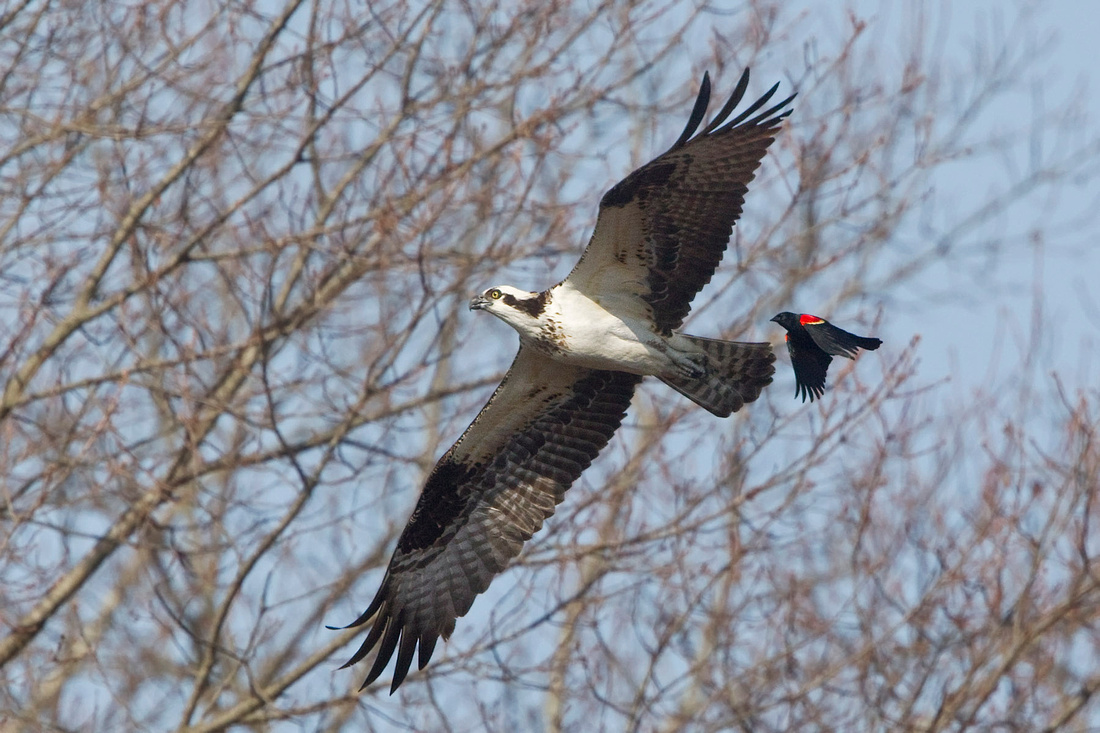

Add to that the squawking egrets, the dozens of ducks erupting into the air at the sight of the eagles and the comings and goings of the awkward cormorants and Rocky Neck has been quite a hot spot the past week.
Comments
So the bird was really able to win the struggle and gulp down that big fish okay?? Does the prey put up a good fight, if eaten, does the unlucky fish get swallowed wriggling/alive all the way as well?!
I have never seen a bird eat a fish (especially this big!) and let alone mid flight!
-Kyle